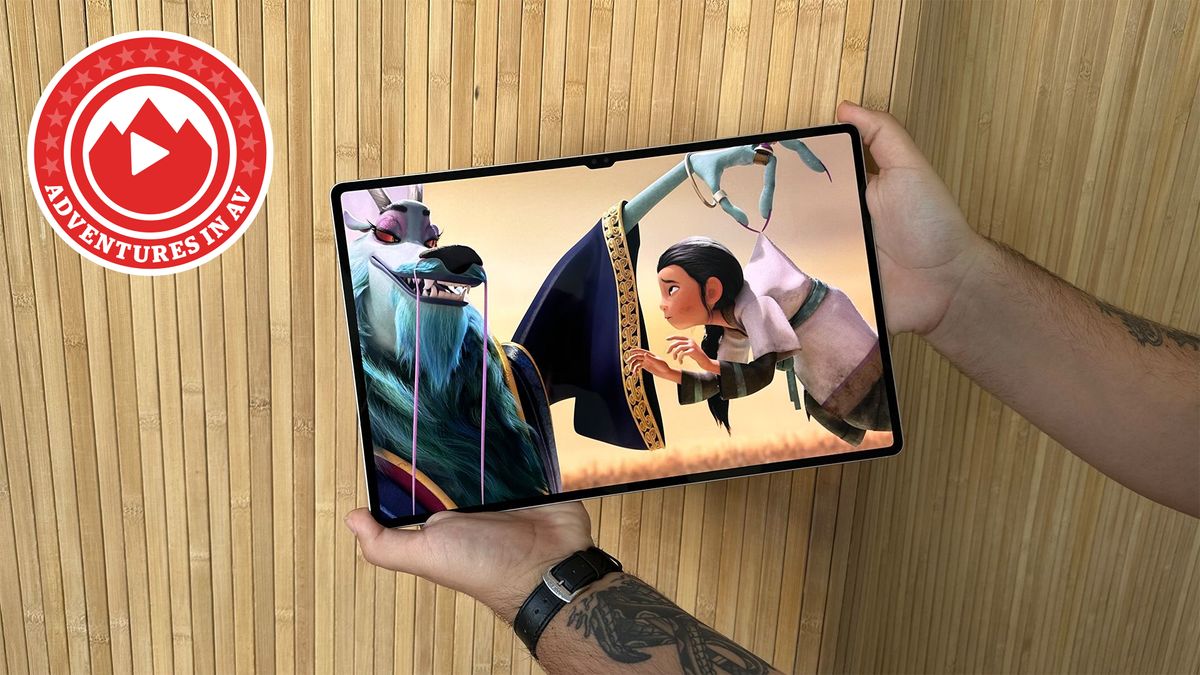Purists continue to sniff at the idea of watching an episode of Bob’s Burgers, let alone a movie, on portable devices. That’s what things like projectors, including the recently reviewed £27k Sony Bravia Projector 9, and full fat 5.2 surround sound systems are for, right?
I partially agree with that sentiment, especially for movies I'm excited about and want to fully experience. But the number of faces I see glued to their screens watching films on my commute to and from the our test rooms each day is clear proof that mobile devices are being used as in-hand home cinemas, whether us cinephiles like it or not.
Which is why I am all for Samsung’s latest pitch on its Galaxy S25 line of smartphones to improve its movie chops by loading the OLED panel with the same upscaling smarts seen on its TVs.
But the more I pondered the move, the more I came to one simple conclusion: why didn’t it launch a tablet aimed at movie fans with the new phone?
Though I limit my use of a smartphone to watching news reels and the occasional episode of Good Mythical Morning, MeatCanyon or TechSpurt on YouTube, I am willing to stick my neck out and admit I regularly watch proper TV (especially anime via Crunchyroll and Hidive) on longer train rides, or in bed using a tablet.
At the moment, there aren’t very many “good” giant screen tablets for this at the top end of the market. Jump to our best tablets guide and you’ll see there’s only one: the Apple iPad Pro 13-inch (M4).
As it stands this is the only option we’d describe as capable of offering a proper “home cinema in a hand” experience when it comes to picture quality – you’ll want a decent pair of headphones to get the full-fat experience. With an iPad, our current recommended set is the Apple AirPods Max.
This is largely thanks to the inclusion of Apple’s What Hi-Fi? Award-winning tandem OLED screen tech which, coupled with its attentive tuning, lets the tablet offer an incredibly bright, but accurate picture. Hence our reviewers’ conclusion:
“Not only does the new iPad Pro boast even better contrast than its predecessor, it also adds richer colours, a more cinematic tone and even better motion.”
I’m not expecting the QD-OLED screen tech to appear on a tablet any time soon – Samsung’s made clear its R&D spend there is going into monitors and larger TVs for the foreseeable future. But, 2025 would have been the perfect opportunity for Samsung to take the fight to Apple and launch a new Galaxy Tablet to take on the iPad Pro, equipped with its advanced upscaling powers.
As we saw on the Samsung QN900D, Samsung is an industry leader here and could have been a key differentiator for a top end Galaxy Tablet – especially if it also took some of the learning it has made over the past few years improving colour accuracy and general authenticity on its TVs.
If it had, this could have been the shift that drove its ongoing line of Galaxy Tab Ultra tablets, the last of which we reviewed being the Galaxy Tab S9 Ultra, from four-star recommendations to five-star Award winners.
Until then Apple’s dominance at the top end of the tablet market for movie fans will likely go unchallenged for yet another year.
MORE:
These are the best smartphones for music and movies
We rate the best wireless headphones
Our picks of the best wireless earbuds

